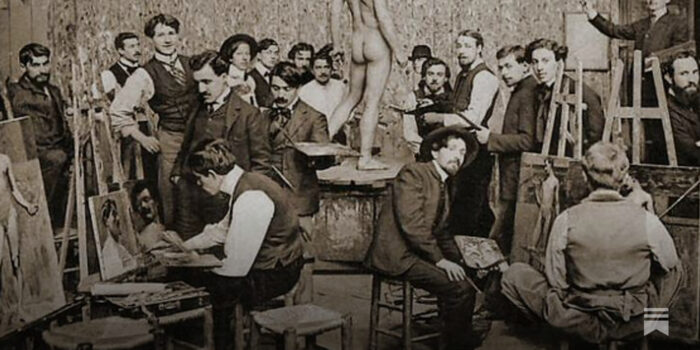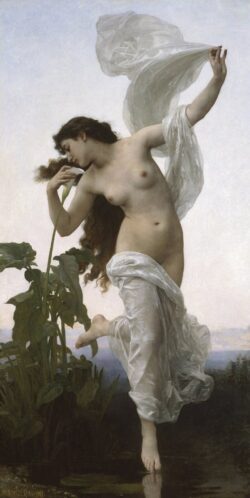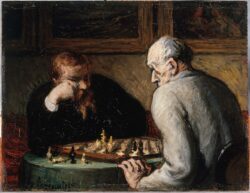What is Academic Art and what did old European art academies teach? How is Academic Art different from Realism? Why academic techniques remain influential today. We will answer these questions in this article.
What is Academic Art?
Academic Art is an art style that was influenced by European art academies from the 17th to the 19th centuries. This includes all artworks like paintings or sculptures that were created at those academies.
There were clear expectations for the artists: They had to follow strict formal and technical rules and master color, light and shadow perfectly. Artists like Jean-Léon Gérôme, William Adolphe Bouguereau or Alexandre Cabanel are some of the more well-known artists in this era.
What did the Art Academies focus on?
The early European art academies were meant to be a theoretical and practical foundation for fine arts that taught art on a scientific level.
Therefore, they had different teachers assigned to different subject areas, unlike the artists’ guilds before which only had one master. This way, the artists were taught to master and understand perspective, proportion, anatomy and composition perfectly. Like said earlier, there were strict rules and expectations for the students.

École des Beaux-Arts, late 19th century
Themes and Motives
Academic Art focused solely on literary, mythological and historical topics. Oftentimes you can find motives like gracefully posed women and angels that were idealistically depicted as flawless and polished.
Academic Art vs. Realism
| Academic Art | Realism |
| Idealized depiction of subjects | Accurate/detailed depiction of reality |
| Polished and perfect skin, no brushstrokes visible | Shows flaws/blemishes and brushstrokes are clearly visible |
| No everyday situations, motives like love, virtue, sacrifice and mythology | Detailed depiction of everyday situations and profane |
| Conservative, strict and elitist | Art for the people, sheds light on societal and social conflicts |

William-Adolphe Bouguereau “Dawn”, 1881

Honoré Daumier “The Chess Players”, late 19th century
The “End” of Academic Art
With the rise of other, more experimental art movements like Expressionism, society and museums lost their interest in Academic Art. Through industrialization and detachment from traditional academic painting, it quickly became irrelevant and was seen as too conservative and outdated.
Because of this idealized worldview of academic artists, the National Socialists set their art as a standard in Germany in the 20th century. They used their art for propaganda, unlike modern art which was defamed and called ‘Entartete Kunst’ (Engl.: ‘Degenerate art’).
The Return of Academic Art
Although Academic Art was once dismissed by many modernists as outdated or overly rigid, its technical discipline and precision have never lost their value. Many avant-garde artists – from the Impressionists to the Surrealists – built their innovations on the solid foundation of academic training. Mastery of anatomy, perspective, and light – often developed through intensive work with live models – gave them the ability to break rules deliberately rather than by accident.
Today, we see a renewed interest in these skills. In a world where AI can generate artistic styles within seconds, the human ability to draw and paint from life has become even more significant. Especially the practice of working with real models – observing posture, expression, and the effects of natural light – provides a depth and authenticity that no machine can replicate.
The “return” of Academic Art is not simply a revival of the past but an acknowledgment of how essential these techniques remain for true artistic freedom and expression. The collaboration with live models, combined with strong classical foundations, continues to be the gateway for artists who wish to create works that are both deeply personal and timeless.
You’re interested in art styles and eras? Feel free to read these blog articles!
Sources
https://de.wikipedia.org/wiki/Akademische_Kunst
https://de.wikipedia.org/wiki/Mimesis
https://www.kunstunterricht.de/kusem/pdf/kap05.pdf
https://www.artandobject.com/articles/what-avant-garde-artists-learned-academic-art
Celina Kari